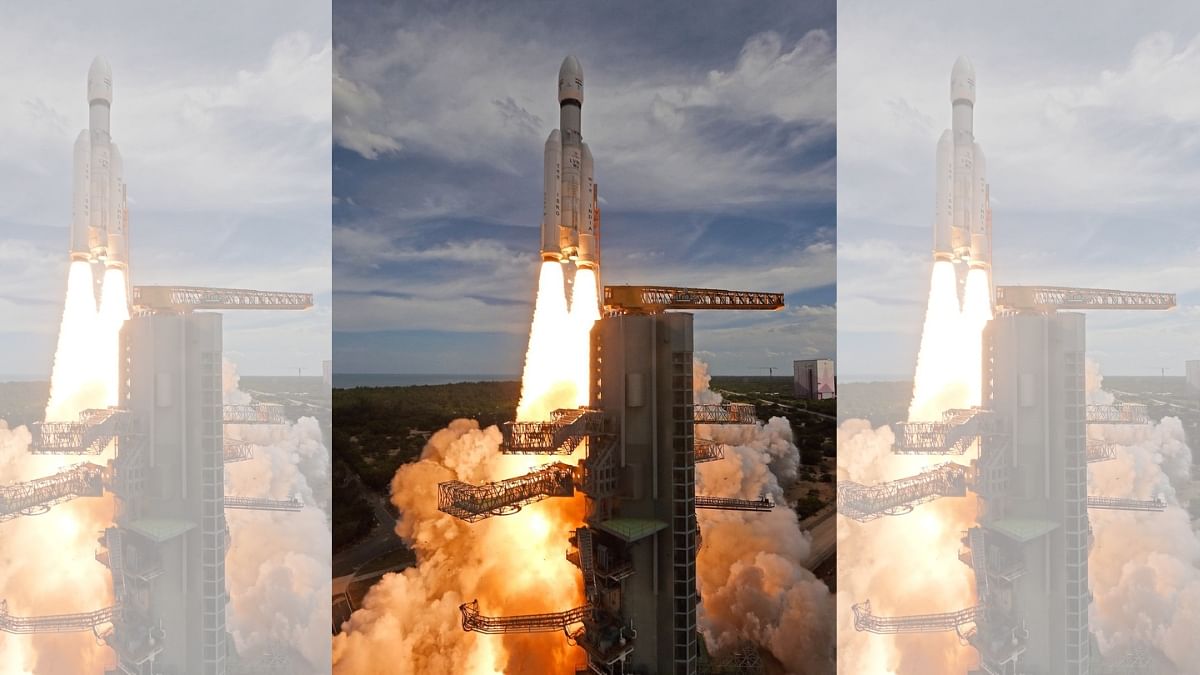Sriharikota: The successful launch of Chandrayaan-3 Friday is also a step forward for India’s first crewed mission to space — Gaganyaan, Indian Space Research Organisation (ISRO) chief S. Somnath said after the lunar mission launch.
The Chandrayaan launch vehicle, LVM3 — which carried out its seventh successful lift-off from Sriharikota, Andhra Pradesh, with the Chandrayaan launch — is now equipped with human rated L110 engines, Somnath said.
India’s third mission to the moon, which was launched successfully from the Satish Dhawan Space Centre, carries a lander and a rover that is expected to land on the Moon on 23 August.
“For this launch, we used the human-rated version of L110 Vikas engine,” S. Mohana Kumar, mission director for the Chandrayaan launch, told ThePrint.
“We have already demonstrated human-rated S200 solid fuel boosters in the last mission. With LVM3 launch, we are adding human-rated elements,” Kumar said.
A human-rated version of the LVM is required to ensure the safety of the human passengers that the launch vehicle will carry during the Gaganyaan launch.
Kumar added that ISRO is trying to increase the frequency of the LVM3 launches so that they can be made ready for the country’s maiden crewed mission to space.
Union Minister Jitendra Singh was quoted in the media as saying Thursday that ISRO’s Gaganyaan is scheduled to be launched at the end of this year or in the next year.
Also read: Gulab jamun to ISRO SSLV—space evangelist Srimathy Kesan building satellites with teen girls
Making LVM3 human ready
The LVM3 has had a hundred percent success rate so far. The three-stage vehicle has two solid strap-on motors (S200), one liquid core stage (L110) and a high thrust cryogenic upper stage (C25).
It can launch the weight of a 4,000 kg spacecraft to the Geosynchronous Transfer Orbit (an elliptical orbit that is used as sort of ‘rest stop’ before raising the height of a spacecraft further for travel to outer space), and 8,000 kg to the Low Earth Orbit of 400 km.
Once all of the LVM3’s components become human-rated, it will be known as the human-rated LVM3 (HLVM3). The HVLM3 will be the launch vehicle for the Gaganyaan mission.
HLVM3 will be capable of launching the orbital module to an intended low Earth orbit of 400 km.
According to ISRO officials, HLVM3 will have a crew escape system (CES) with special solid motors that can help take the module with crew to a safe distance in case of an emergency.
(Edited by Smriti Sinha)
Also read: India Space Congress shows the need to bridge gender gap—ISRO must stand up, men must sit down

